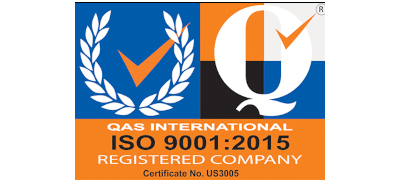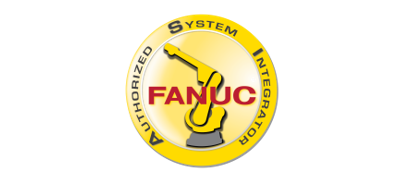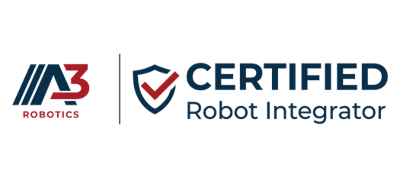Paul Prior— Precision from the Ground Up
A sales leader with manufacturing roots, bringing discipline and trust to high-volume CNC workholding and automation.
From Fixture Builder to Advisor
Paul’s career at Industrial Tool Inc. began not in sales, but on the shop floor as a toolmaker and machinist/custom machine builder. He cut his teeth building fixtures, learning first-hand how precise part location and clamping are essential for a reliable and repeatable part clamping recipe. That hands-on foundation now shapes every conversation with his customers.
“Tell me about the part; the datum structure, tolerances, and all features being machined—that’s where it all starts. Even in a sales call, I’m thinking like a fixture builder.”
It’s that mindset—part machinist, part fixture builder, part partner—that makes Paul relatable to customers from the first discussion. He’s not pitching; he’s problem-solving.
Why Technical Insight Builds Trust
After summarizing ITI’s capabilities, Paul streamlines the conversation by focusing on the customer’s parts. He requests a part print and solid model early, using them to quickly identify where challenges lie—whether in tolerances, cutting tools, flatness requirements, or cycle times.
“If they’re machining the part now, I want to understand the current fixturing and cutting processes. What’s working and what’s not working— part quality, tool life, surface finish requirements. That shows them we’re the right group to help them.”
This front-loaded review is more than a box-check. It reduces rework, accelerates PPAP/FAI approvals, and gives customers in aerospace, automotive, medical, and defense confidence that the process will scale.
Defining a “High-Volume Ready” Fixture
For Paul, the recipe is simple: accurately locate the part in the fixture and design a clamping recipe that doesn’t distort the part during the machining process. Then, add state of the art cutting tool technology to optimize the cutting process. After the part is correctly fixtured and we are machining capable parts, the final piece is adding automation.
“The design must be based on the part’s datum structure. Whether the fixture has one nest or nine, accurate part locating is what makes it repeatable for thousands of cycles.”
That disciplined approach, built by ITI’s design and applications teams, allows ITI to commit to cycle times and part quality requirements, ensuring that our fixtures and automated machining cells produce capable parts—day after day, shift after shift.
Asking the Hard Questions Up Front
Every discovery call starts with questions to uncover and identify details about the project.
- Is the current fixturing solution manual or hydraulic?
- How are you currently measuring the part and is your current measurement process reliable?
- Does the print require measurement to be performed in a clamped, or free state?
- What are the capability requirements?
- Do the current cutting tools produce capable parts?
“We believe in tackling challenges head-on. By asking the right questions early, we uncover what really matters and build solutions that stand the test of time.”
It’s this depth that sets ITI apart from shops that sell hardware without committing to the customers success.
The Most Common Workholding Mistake
Paul doesn’t hesitate on the biggest pitfall: a solution that doesn’t include fixture design and applications teams working hand in hand to create a well thought out fixturing and machining solution.
“If the fixture locating process doesn’t reference the parts datum structure, you lose repeatability and capability.”
By engineering fixtures around precise part datums and critical tolerances, ITI delivers the accuracy that high-volume production demands.
Design + Applications: A Unified Approach
Once a customer chooses ITI, collaboration begins. Mechanical designers and applications engineers work side-by-side.
“When the applications team weighs in on tool access and cutting strategies, you don’t just get a fixture that holds. You get a system that meets capability requirements, day in and day out.”
Automotive vs. Aerospace: Same Discipline, Same Approach
Automotive programs may run thousands of cycles, aerospace programs just a handful. But the design approach is identical.
“Whether it’s 10 parts or 10,000, the fixture has to be robust and repeatable. The recipe doesn’t change.”
The difference lies in scalability and flexibility. ITI’s commitment never wavers.
Automation Starts with the Fixture
Paul is blunt about robotics:
“The robot can’t fix a bad fixture. Its job is to load and step out of the way. The fixture is responsible to locate and clamp the part for machining—that’s the heartbeat of an automated machining cell.”
That’s why ITI builds automation programs on automotive-grade workholding first. Without that, part variation will negatively affect quality, uptime, and ROI.
Value That Goes Beyond the Fixture
For Paul, ITI’s value isn’t just in design or build quality—it’s in the partnership.
“We’ve never walked away from a project. We own the outcome, from kickoff through runoff. That’s 50 years of reputation on the line.”
Customers don’t just buy a fixture; they reduce risk by choosing a partner that stands behind the entire project.
Explaining ROI to Non-Engineers
Not every decision-maker speaks the language of GD&T. Paul translates performance into measurable KPIs: uptime, scrap reduction, tool life, faster changeovers.
Those metrics map directly to financial outcomes, supported by ITI’s ROI Calculator.
“We don’t just explain complexity—we connect it to dollars and risk reduction. That’s what wins projects with procurement and plant managers.”
Looking Ahead: Quick-Change and Smart Feedback
Paul sees the future in flexibility and intelligence. Automated, quick-change systems expedite part changeover on automated cells.
“Customers want universal solutions. Quick-change tooling and smart automation are game changers—but only if the fundamentals are solid. A well thought, custom-designed fixturing solution is where it starts. That hasn’t changed.”
For ITI, tomorrow’s fixtures will be faster to change, smarter to run, and easier to monitor—without compromising the fundamentals.
Ready to Talk Workholding Strategy?
Bring your prints, tolerances, and production targets. Paul and the ITI team are ready to design a workholding solution that delivers—in print, at volume, and for the long run.


